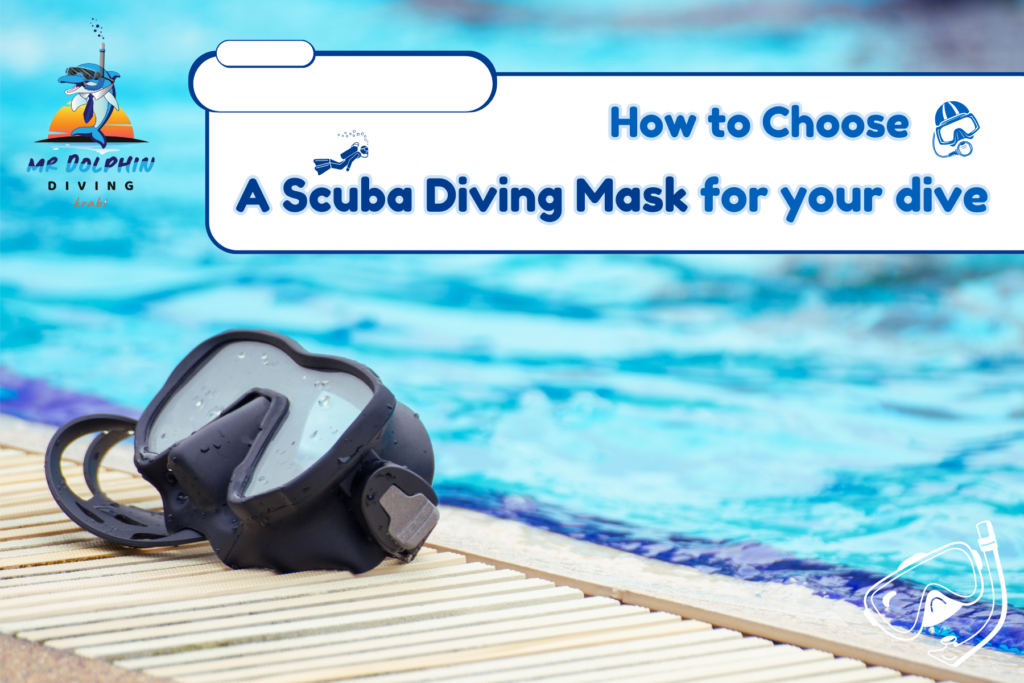Have you ever surfaced from a dive frustrated because your mask kept leaking or fogging up? The right diving scuba mask can significantly impact your underwater experience, ensuring comfort and clarity. From beginner to seasoned diver, choosing the right mask is important for comfort, visibility, and overall enjoyment. But with so many options available, how do you decide? In this guide, we’ll walk you through everything you need to know about selecting the best diving mask for your needs, from fit and comfort to advanced features and maintenance. If you’d like to upgrade your scuba diving equipment or purchase your first set, this article is for you.
Understanding the Basics of a Scuba Diving Mask
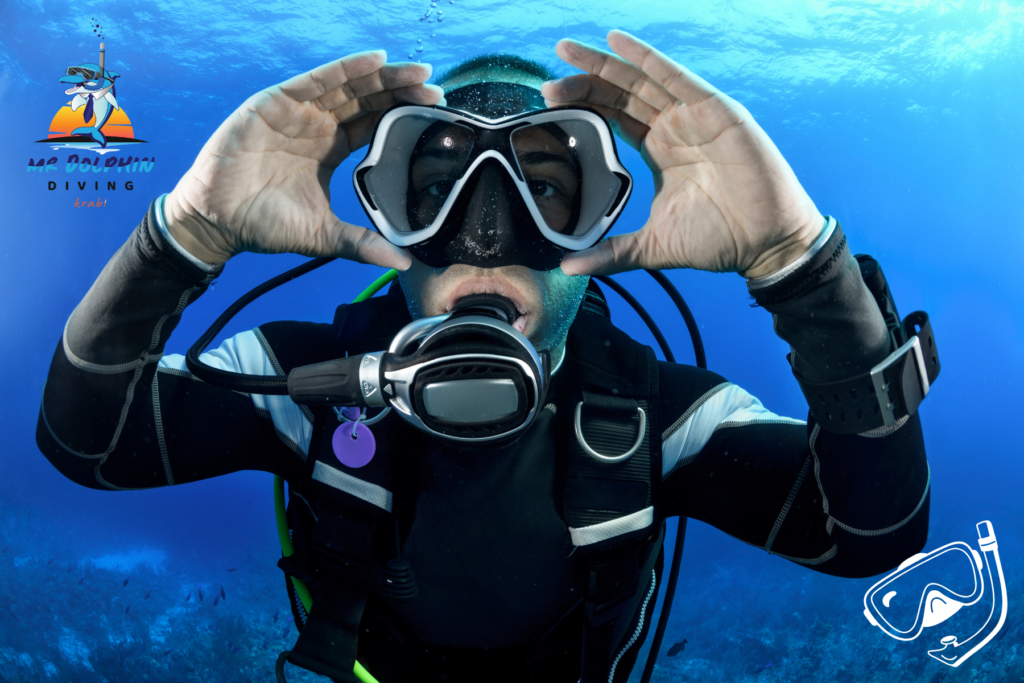
A scuba mask creates an air pocket around your eyes, allowing you to see clearly underwater. It also has a nose pocket that helps you equalize pressure as you descend. Unlike regular swimming goggles, scuba masks are designed to withstand higher pressure, making them a must-have for diving.
Key Components of a High-Quality Diving Mask
- Skirt: The soft silicone material that creates a seal against your face to prevent water from entering. High-quality skirts ensure the most comfortable scuba mask experience.
- Lens: Made from tempered glass to withstand pressure and provide clear vision. Some lenses offer coatings for anti-glare and UV protection.
- Frame: Holds the lens in place (some masks are frameless for a wider view and lighter weight). If you’re looking for the best mask for scuba diving, consider a lightweight yet durable frame.
- Straps: Adjustable to secure the mask comfortably around your head. A good diving mask should have flexible, quick-adjusting straps.
- Nose Pocket: Allows you to equalize pressure as you descend. This feature is critical, especially when choosing the best diving mask for beginners.
How Do Scuba Masks Work?
Scuba masks work by creating an airtight seal that keeps water out while providing an air pocket for clear vision. The nose pocket allows for equalizing pressure as you dive deeper, ensuring comfort and safety. Properly fitted masks prevent leaks and enhance visibility.
How to Choose a Diving Mask That Fits Perfectly
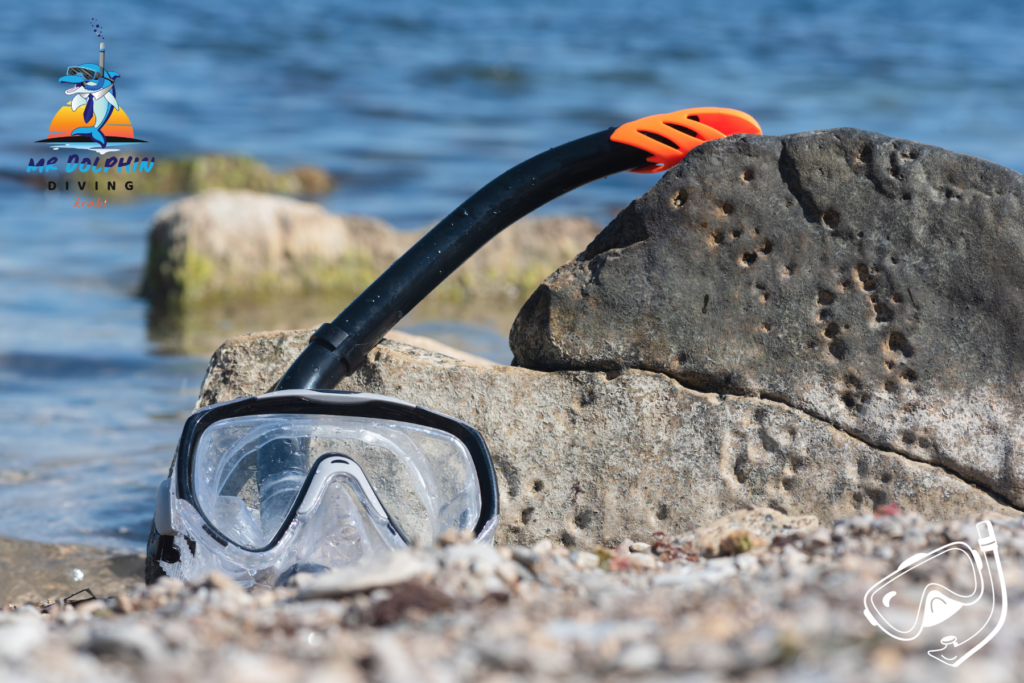
Fit is the most important factor when selecting a diving scuba mask. A poorly fitting mask can cause leaks, discomfort, and even impair your vision underwater. Here’s a quick test to check if a mask fits your face:
- Place the mask against your face without using the strap.
- Inhale slightly through your nose.
- If the mask stays in place without air leaks, it’s a good fit.
- If air seeps in, try another model.
Factors to Consider for the Best Fit
- Face Shape: Different masks accommodate different face shapes. Some masks are designed for wider faces, while others are more suited for narrow or smaller faces. Testing multiple options will help determine the best match for your facial structure.
- Asian Fit Scuba Mask: Specifically designed for individuals with lower nose bridges and higher cheekbones, these masks offer a better seal and comfort. The silicone skirt is shaped to prevent leaks that might occur with standard designs.
- Best Scuba Mask for Small Faces: If you have a smaller face, choosing a mask with a compact frame is essential. These masks feature a smaller skirt to ensure a snug fit, preventing leaks and improving the overall diving experience. Some brands offer models explicitly labeled for petite facial structures.
- Most Comfortable Scuba Mask: Comfort is key when diving for extended periods. A high-quality silicone skirt with a soft yet secure fit helps reduce pressure on the face, preventing red marks and discomfort. Additionally, lightweight masks add to overall comfort and minimize fatigue during long dives.
- Strap Adjustability: Look for masks with quick-adjust buckles that allow you to fine-tune the fit effortlessly, even while wearing gloves. Some models feature split straps, distributing pressure more evenly to boost comfort and prevent slippage.
Different Types of Scuba Masks and Their Benefits
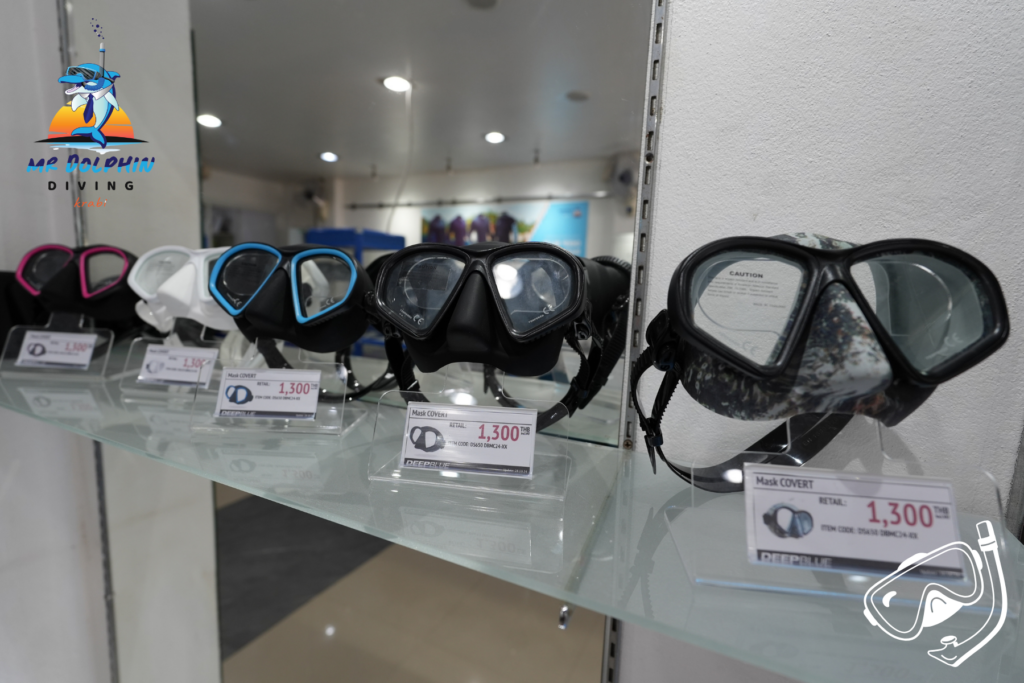
There are several types of scuba masks, each designed to accommodate different diving conditions and preferences. Prices typically range from 1,100 THB to 4,000 THB ($30–$110) across all mask types. Let’s explore each type in detail.
1. Single-Lens Masks for a Wide Field of View
- Provides an unobstructed field of vision, offering a more open and immersive diving experience.
- Suitable for those who prefer a panoramic view without a center divider.
- Often designed with a frameless structure for added comfort and flexibility.
2. Dual-Lens Masks for Customization
- Allows for prescription lens replacements, making them a great choice if you need prescription scuba masks.
- Offers a slightly more compact design, which can reduce mask volume and make clearing water easier.
3. Frameless Masks for Travel Convenience
- Lightweight and easy to pack, making them ideal for frequent travelers.
- Offers a wider view without a bulky frame, increasing comfort and flexibility.
- Less rigid than framed masks, providing a snugger fit.
4. Full Face Dive Mask for Ultimate Comfort
- Covers the entire face, allowing for natural breathing through both the nose and mouth.
- A scuba full-face diving mask is appropriate for those who want increased comfort, a wider field of vision, and built-in communication options.
- Ideal for recreational snorkeling and underwater photography.
5. Low-Volume Masks for Easy Clearing
- Easier to clear water from the mask, requiring less effort to equalize.
- Perfect for freediving, spearfishing, and technical diving.
- Closer fit to the face, reducing drag and enhancing visibility.
6. High-Volume Masks for Improved Comfort
- Provides a larger air space inside the mask, which can reduce pressure on the face during deep dives.
- Often preferred by divers who experience discomfort with low-volume masks.
- May require more effort to clear water but can feel less restrictive.
7. Framed Masks for Durability and Structure
- Offers a sturdy frame for added durability, making them ideal for frequent use.
- Provides a more secure and rigid fit, reducing movement during dives.
- Often supports replaceable lenses, making them a good option for prescription wearers.
Best Diving Masks Based on Different Needs
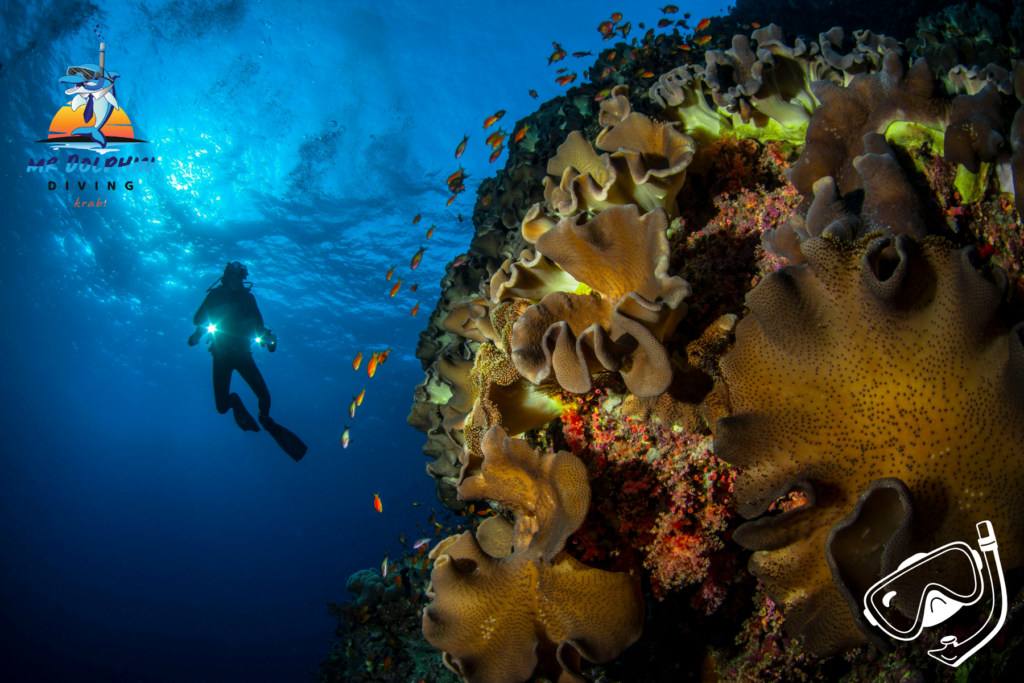
Every diver has different needs. Here are the top diving masks based on specific situations:
Best Diving Mask for Beginners
- A simple, easy-to-clear mask with a wide field of vision.
- Look for a model with soft silicone for extra comfort.
- A built-in purge valve can make clearing water easier.
Best Scuba Mask for Women
- Smaller frames with a comfortable fit for narrow faces.
- Lightweight designs reduce pressure on the face.
- Softer silicone skirts prevent facial marks and discomfort.
Best Scuba Mask for Budget Shoppers
- The best budget dive mask should balance price and durability.
- Avoid cheap plastics—opt for tempered glass and high-quality silicone.
- Look for reliable brands that offer cost-effective options.
Best Scuba Mask for Prescription Lenses
- If you wear glasses, a prescription scuba mask allows you to see clearly underwater.
- Prescription scuba mask costs vary, but investing in quality lenses is worthwhile for better visibility and a safer dive.
Additional Features to Consider When Buying a Scuba Mask
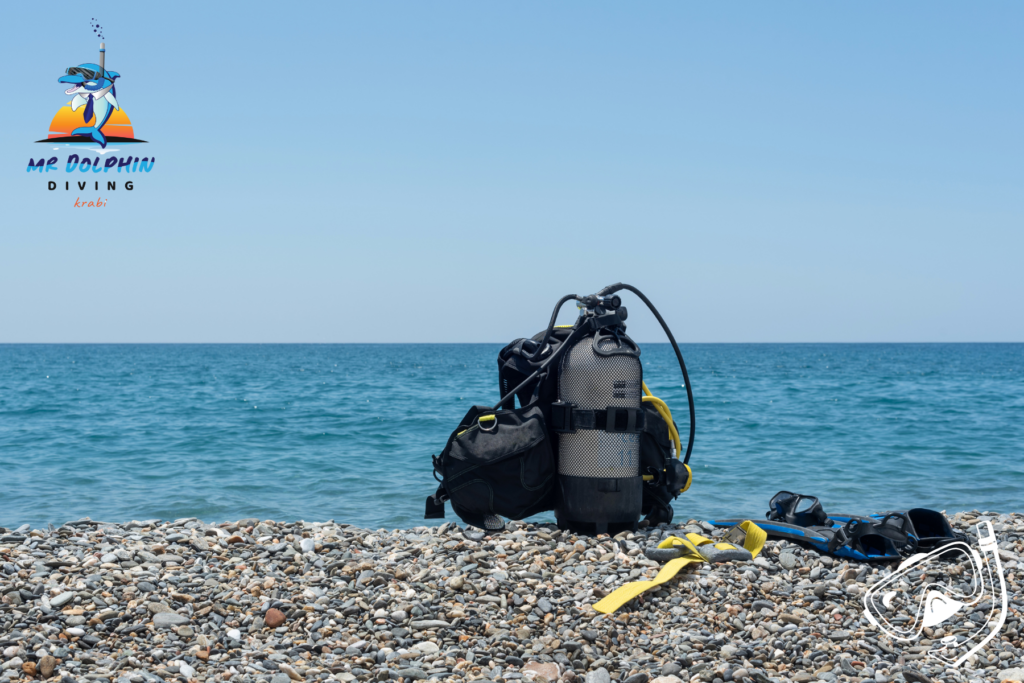
When choosing the best scuba diving mask, here are some extra features to think about:
- Anti-Fog Coating: Prevents condensation buildup, ensuring a clear view throughout your dive. Some high-end masks come with built-in anti-fog technology, while others require anti-fog sprays or treatments before each use.
- Purge Valve: Helps clear water easily without having to remove the mask. This feature is particularly beneficial for beginners who might struggle with clearing water manually.
- UV Protection: Reduces glare and eye strain in bright conditions, making it ideal for tropical dives where sunlight is intense. It also helps protect your eyes from long-term UV exposure.
- Scratch-Resistant Lenses: Ensures long-lasting clarity and durability, preventing minor abrasions that could obstruct your vision. This is particularly useful for divers who frequently handle their masks roughly.
- Adjustable Buckles: Allow for precise fit adjustments to maximize comfort and seal quality. Look for quick-release or ratchet-style buckles that make it easy to fine-tune your fit even while wearing gloves.
Cleaning and Maintaining Your Dive Mask for Longevity
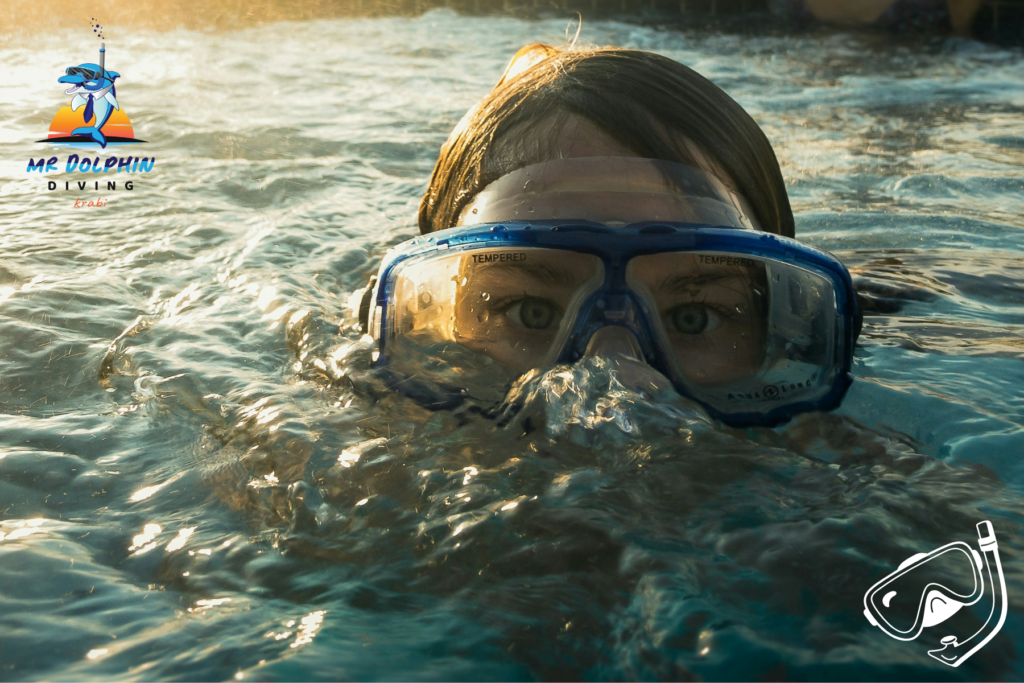
A well-maintained mask lasts longer and performs better. Here’s how to keep yours in top shape:
Cleaning a Dive Mask Before the First Use
- New masks have a protective film that needs removal.
- Use toothpaste or a mask-cleaning solution to scrub the inside of the lens gently.
- Rinse thoroughly with fresh water and let it dry before storage.
Routine Cleaning After Each Dive
- Rinse with fresh water after each dive to remove salt and debris.
- Avoid touching the inside of the lens to prevent smudging.
- Store in a cool, dry place away from direct sunlight to prevent degradation.
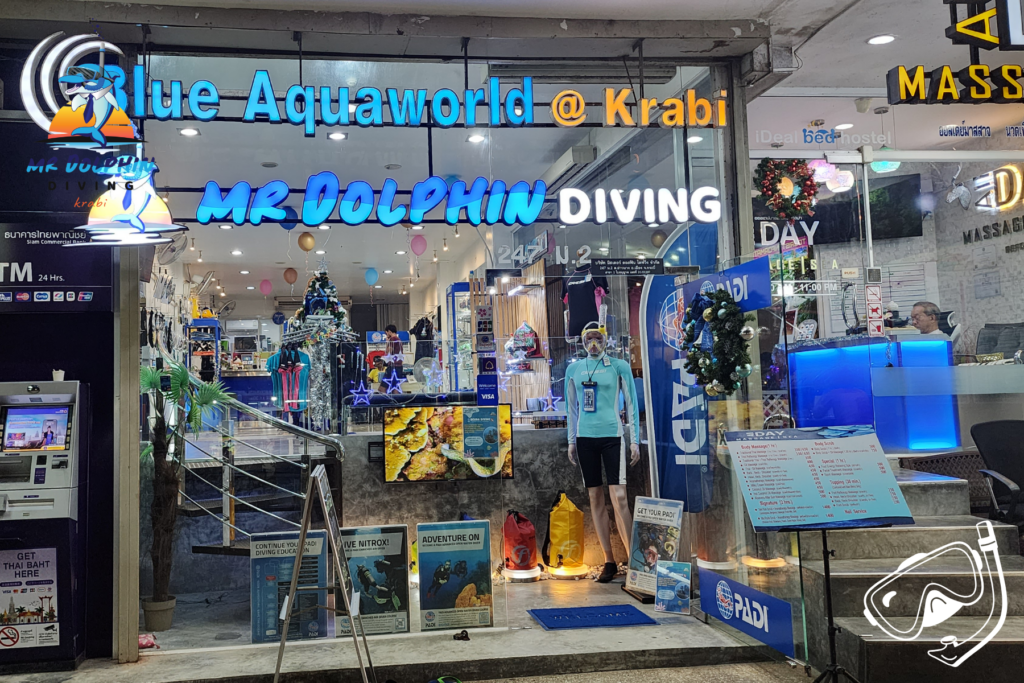
As you prepare for your next underwater journey, consider the exceptional services offered by Mr. Dolphin Diving, located in Ao Nang-Krabi, Thailand. We offer a robust range of PADI courses, including Open Water Diver, Advanced Open Water, and specialties like Rescue Diver and Dive Master. Our experienced team uses a detailed fitting process that ensures your mask offers the best possible seal, comfort, and field of vision, regardless of your face shape or size.
Furthermore, Mr. Dolphin Diving is your ideal partner for expanding your diving skills with specialized courses such as Nitrox Enriched Air Diver, Underwater Navigator, or Wreck Diver, as well as snorkeling and private charter. We also excel in equipment consultation, helping divers choose the right gear based on the specific conditions of their dive sites and personal preferences. We offer maintenance workshops as well, where divers can learn how to care for their equipment to prolong its lifespan and maintain optimal performance. Contact us today to book your course, schedule a gear fitting, or plan your private dive experience.


